
Serkan Aktaş is an award-winning filmmaker known for his work in fantasy and science fiction cinema. He holds degrees in Business Administration and Mathematics, as well as advanced degrees in Film and Television. His films, including The Librarian (2022), Mirrorty (2017), and Resurrection under the Ocean (2021), have been recognized at international film festivals. Driven by a passion for storytelling, Aktas believes that “the best movie is one that can be watched over and over again,” and aims to inspire audiences with the joy and wonder of cinema. He also strives to address real-world issues through his films, stating, “I find solutions to the world’s unsolved problems through making movies.”
indieactivity: How did you get into directing? How would you describe your style?
Serkan Aktaş (SA): I got into directing as a student at the Istanbul Cinema Academy, where I studied filmmaking in October 2015. I worked as one of the five directors on the project Lovedex Night Shift, and on the first day of the shoot, I was given the role of director. That’s how my journey in directing began. As for my style, it’s a mix of my favorite directors: Alfred Hitchcock, David Lean, Sergio Leone, and Steven Spielberg. I draw inspiration from their storytelling techniques, attention to detail, and ability to evoke deep emotions through visual and narrative choices.
The Official trailer for The Librarian, written and directed by Serkan Aktaş
Do you hire a casting director, or cast yourself? If so, what criteria go into your casting?
Serkan Aktaş (SA): I generally prefer to hire a casting director to handle the overall casting process. A casting director brings valuable expertise and helps ensure that we find the right fit for each role in the film. However, when it comes to the protagonist and antagonist, I take a more hands-on approach. These two characters are central to the story, and they shape the entire narrative. For these key roles, I feel it is essential to personally choose the actors and actresses, as they are the heart of the film.
The criteria for casting the protagonist and antagonist go beyond just skill; it’s about finding someone who can truly embody the essence of the character. It’s a deeply personal decision for me, as these roles are so crucial to the storytelling and overall impact of the film. The actors I choose for these roles must connect with the character on a deeper level and bring their own unique touch to the performance
What went into the casting process for “The Librarian”?
Serkan Aktaş (SA): The casting process for The Librarian was a collaborative effort. I had a casting director friend who works with a casting agent, and through them, I was able to arrange actors and actresses at a reasonable cost. However, the casting of the protagonist, Mazhar, has a particularly interesting story.
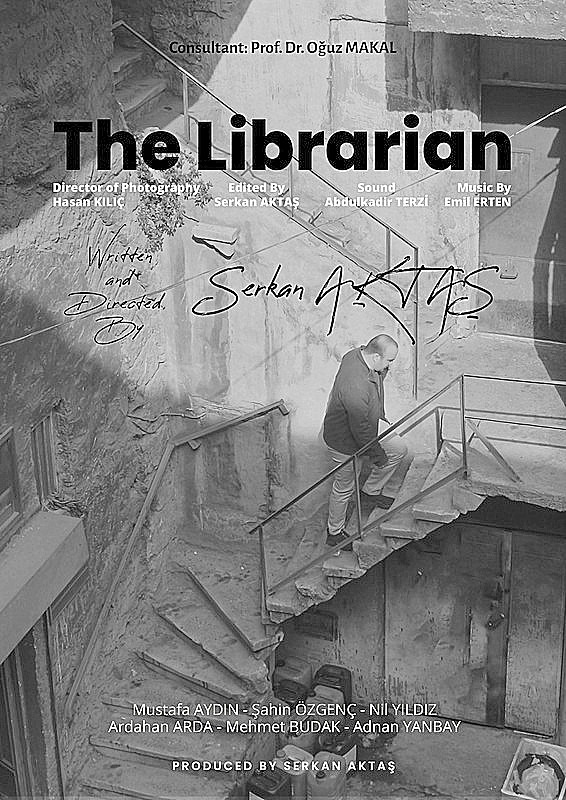
While I was writing the script, I had already created the character of “Twin” to represent the protagonist’s internal dilemma in a unique way. This was before I met Mustafa Aydın. I first encountered Mustafa while he was performing a pantomime dance in a metro station. I’ve always had an appreciation for dance, especially Turkish folk dance, so his performance immediately caught my attention.
After he finished dancing, I approached him, and we ended up talking at a nearby café. During our conversation, Mustafa shared with me that he often spoke to himself, just like Mazhar, the character I had written. This revelation deeply resonated with me, and I instantly thought he would be the perfect fit for the role of Mazhar. So, I gave him an offer to participate in the movie, and he accepted. He was, without a doubt, the most proper actor for the role.
Mustafa brought so much of his own life experience to the role, and his dedication to the character was evident in his performance. He truly embodied Mazhar, and his portrayal was so powerful that it earned him several awards. His acting was crucial in bringing the character to life in a way that went beyond what I had envisioned when writing the script.
Without giving anything away, tell a little bit about the script; how did you come up with the idea?
Serkan Aktaş (SA): The idea for The Librarian started to take shape during my doctoral studies. One of the key inspirations for the film came from Martin Scorsese’s 1976 film Taxi Driver, particularly the anti-hero Travis character, portrayed by Robert De Niro. This character’s struggle with isolation and communication in a metropolis sparked my own exploration of loneliness in modern society.
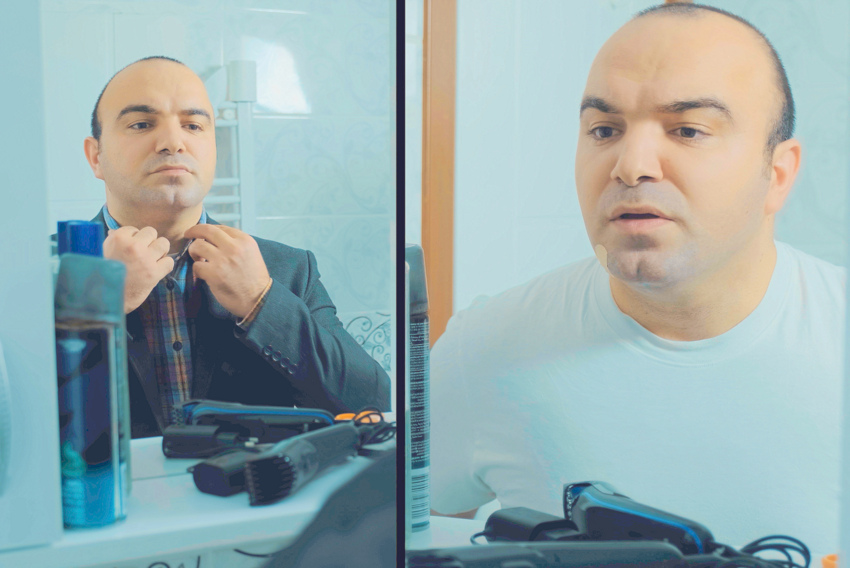
As I observed the sociopolitical changes in Turkey at the time, particularly the influx of Syrian refugees and the influence of Arabic culture and language, I began to shape the idea for the story. The film’s protagonist, an intellectual working in a library, came to life in my mind as a person deeply connected to literature and his native Turkish language, struggling with feelings of displacement and loneliness in an increasingly complex world.
I chose the Fatih district in Istanbul, where many immigrants settle, as the setting for the story. Watching how the immigrants brought their own culture, food, and language, I found the perfect backdrop for the film. The protagonist, a library worker passionate about literature and his native tongue, faces the struggle of preserving his identity in a society that seems to be shifting around him. In essence, The Librarian is a reflection on the importance of language, culture, and identity, while also examining how society often isolates those who are deeply connected to intellectual and cultural values.
Who is “The Librarian” for? Who do you think would enjoy it the most?
Serkan Aktaş (SA): The Librarian is, first and foremost, for me. It was born out of my journey in the Doctor of Art program in Film and Television at Beykent University, and it represents a culmination of my academic and creative efforts. It reflects my personal vision and approach to filmmaking. As for the audience, I want people to experience the same joy and wonder that cinema brings me. I hope The Librarian resonates with those who love to dive into thought-provoking stories and explore complex themes. It’s especially for viewers who appreciate films that engage with both emotional depth and intellectual ideas. Ultimately, I believe anyone who appreciates the magic of cinema and its power to transport and transform will find something special in this film.
How long did it take to shoot the entire film?
Serkan Aktaş (SA): The entire shooting process for The Librarian took 6 days, or one week. We had a tight schedule, and the key scenes were filmed in just 5 days. We used the Fujifilm XT3 4K camera with a 16-55mm zoom lens for most of the shots, while the underwater scene was captured with a Sony A7S3 4K camera with a 28-75mm zoom lens.
The Librarian – M. C. Escher Stairs
Before filming, we did location checks and rehearsals with the actors, ensuring everything was ready. Due to the limited shooting time, we visited the locations a week in advance to conduct tests on challenging scenes. The lighting was carefully adjusted according to the sun’s position for outdoor shots, and we used three-dimensional depth lighting for indoor scenes. Costumes were also chosen to align with the narrative. The underwater scene, which was filmed in Kaş, Antalya, took place on the 6th day, completing the entire shoot in just one week.
How long was the post-production process?
Serkan Aktaş (SA): The post-production process for The Librarian took about one month. We used Adobe Premiere Pro 2021 for editing, which involved carefully selecting the emotional scenes that would best serve the narrative, rather than simply lining up the footage. In terms of color grading, we worked with DaVinci Resolve to enhance the film’s natural look and psychological impact. Additionally, we used split screen effects to support the dramatic storytelling, which were created using Adobe Premiere Pro.
The music was composed by Emil Erten, with notable pieces such as Bach’s BWV Sol Major Fugue and Turkish classical music by Sadettin Kaynak. Sound effects and sound design were handled by myself (Serkan Aktaş), with the final mixing done by Göknur Topal Güngör.This collaborative and efficient process allowed us to bring all the elements together and complete the film within a month.
You had talents working, why is diversity important both in front of and behind the camera?
Serkan Aktaş (SA): Diversity is crucial both in front of and behind the camera because it enriches the storytelling process and helps create a more authentic and impactful film. When we have diverse perspectives, we bring in a wider range of experiences and ideas that shape the narrative and the way it’s presented. Whether it’s the cinematography, sound design, or editing, every creative decision benefits from the inclusion of different voices and viewpoints.
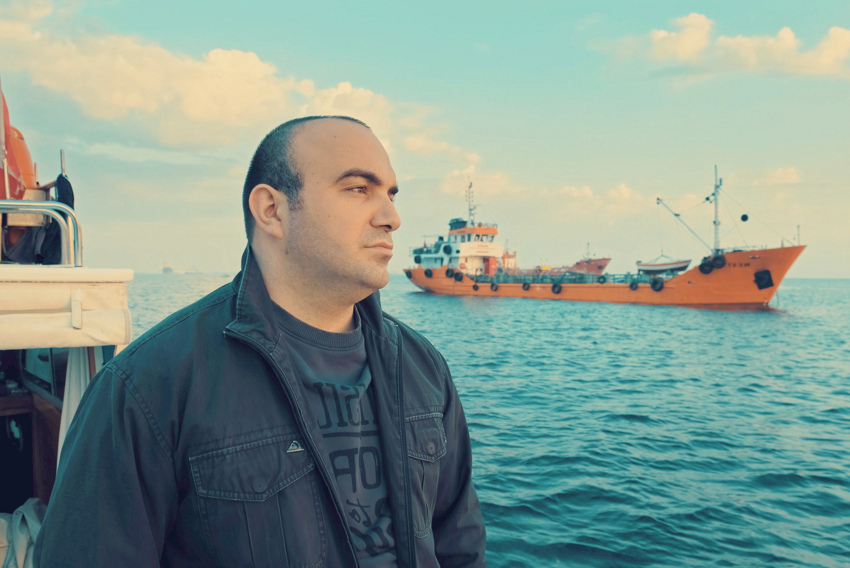
For example, in The Librarian, we employed different narrative techniques, like episodic storytelling and split screen, which helped emphasize the internal conflicts and dilemmas of the protagonist. These methods were chosen not just for their technical appeal, but to align with the film’s thematic focus. The collaborative effort behind the scenes, including talented cinematographers, sound designers, and composers, was essential in bringing these techniques to life in a way that deeply resonated with the audience.
Additionally, the use of color, particularly the “Blue” tones, was a deliberate choice to reflect the protagonist’s inner journey of loneliness and introspection. Blue, often associated with sadness and isolation, served as a visual cue to communicate these complex emotions. This kind of depth in visual and auditory storytelling wouldn’t be possible without the diversity of thought and expertise brought by each team member. Ultimately, diversity fosters innovation, creativity, and emotional resonance, making it a powerful tool in shaping both the story and its impact on viewers.
What are your goals with “The Librarian”?
Serkan Aktaş (SA): My primary goal with The Librarian is for the film to reach audiences all over the world. I truly believe in its potential, and I hope it will be screened on platforms like Amazon Prime in both the US and UK. This would allow a wider audience to experience the story. Secondly, I’ve already turned The Librarian into a book, available in both Turkish and English. Now, I’m working towards adapting it further into a feature film project within the fantasy genre.
What’s next for you? What are you working on right now?
Serkan Aktaş (SA): My next project is Kanlısırt – The Blood Ridge, a feature film that I’m both writing and directing. The script is already complete. The story is set during World War I, focusing on the battle between the Turkish Army and the British Army at the Blood Ridge (Kanlısırt) in Gallipoli. It’s a historical drama that explores courage, sacrifice, and the human cost of war.
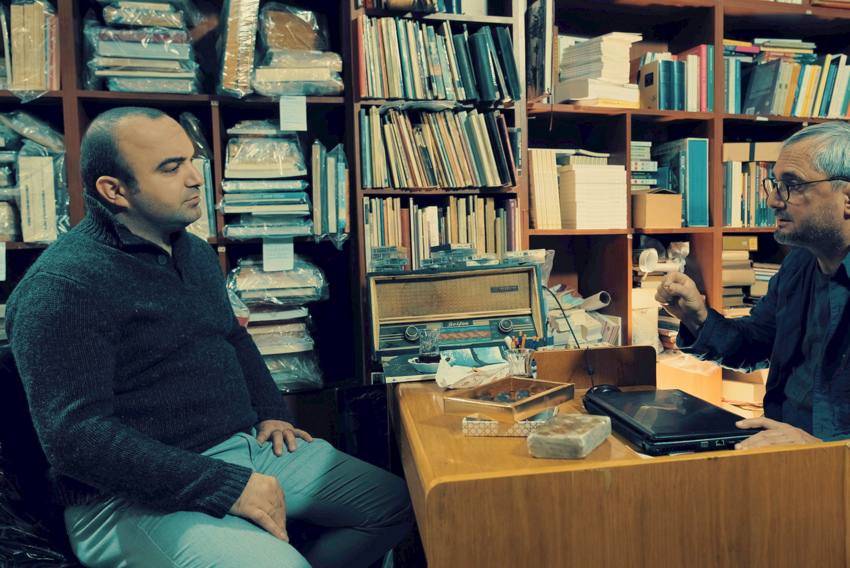
In addition to that, I’ve been collaborating with an American writer friend on a robot-themed feature film project for the past eight months. It’s a fascinating exploration of the intersection of technology and humanity, and I’m excited to see how it evolves.
What would you recommend to a new director? Any courses, workshops, books?
Serkan Aktaş (SA): My advice to new directors is simple: Read every day, watch every day, write every day, and then make your movie. The more input you get, the more output you’ll have. As for books, I recommend reading “classic literature“. Start with works like Don Quixote by Cervantes, Shakespeare’s plays, Victor Hugo, Alexandre Dumas, and Charles Dickens. Russian literature is also key—Dostoevsky, Tolstoy, Pushkin, and Turgenev. These authors provide deep insights into “character” and “human nature”, which are essential for storytelling in any medium. A well-rounded understanding of literature and film is crucial for any director’s journey.
Who is your favorite director? Why?
Serkan Aktaş (SA): My favorite directors are Alfred Hitchcock, David Lean, Sergio Leone, and Steven Spielberg. Each of them has had a profound impact on my work and the way I approach filmmaking.
Alfred Hitchcock, for example, mastered the art of suspense and storytelling, using every frame to build tension and keep the audience on the edge of their seats. His precision in creating psychological depth in his characters is something I admire deeply.
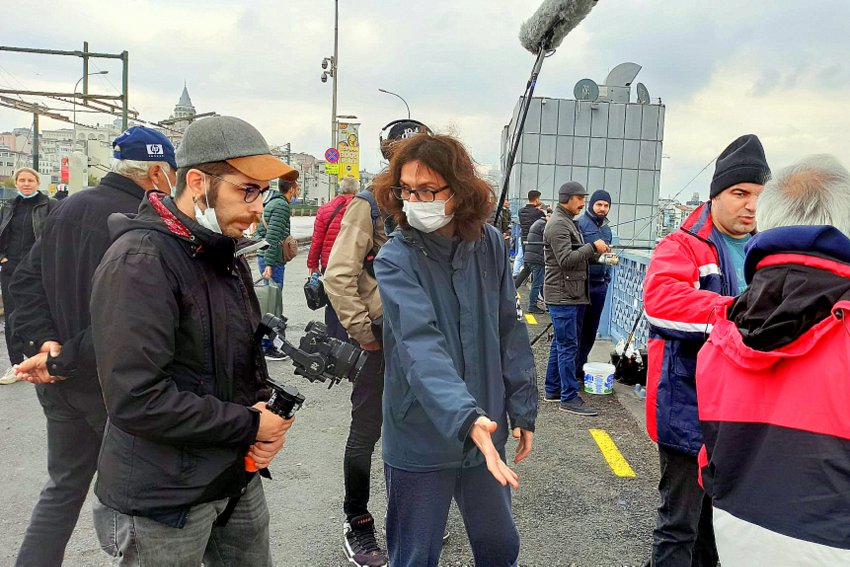
David Lean’s work, particularly in epics like Lawrence of Arabia and The Bridge on the River Kwai, is a huge inspiration for me. His ability to blend grand storytelling with deeply human moments is something I strive to capture in my own films.
Sergio Leone has an iconic use of the close-up and his innovative approach to the Western genre. He taught me the power of visual storytelling and how to create unforgettable cinematic moments. His films transcend their genres, which is something I aim to do with my own projects.
Lastly, Steven Spielberg’s influence is undeniable. His skill in blending adventure, emotion, and spectacle is unparalleled. He has a unique ability to make audiences feel like they’re part of the story. Something that I always strive for in my own work. Each of these directors has shaped the way I view and create films. And, I find inspiration in their ability to connect with audiences on a deep emotional level.
What advice would you give directors around the world?
Serkan Aktaş (SA): Approach filmmaking with both intellectual depth and a sense of responsibility. The world needs directors who aim to solve real-world problems or contribute to their solutions through their films. As I always say, “With my intellectual perspective and filmmaker identity. I strive to find solutions to the world’s unsolved real-world problems or contribute to those solutions through making movies. That’s what I do.” I believe filmmakers can make a significant impact by creating works that challenge societal norms, provoke thought, and inspire change.
The LIbrarian Demo Reel
Tell us what you think of the interview with Serkan Aktaş. What do you think of it? What ideas did you get? Do you have any suggestions? Or did it help you? Let’s have your comments below and/or on Facebook, Instagram, or Twitter.
Socials
Website
IMDb
Facebook
LinkedIn
Twitter
YouTube
Vimeo
FILMMAKER INTERVIEWS









